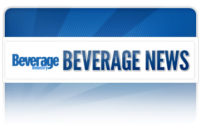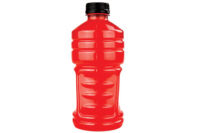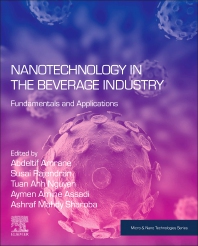Beverage-makers find the right performance ingredients for victory
Performance drink ingredients give athletes an extra boost

Big Red Inc.’s Hydrive Energy Water contains L-carnitine, which can help reduce muscle soreness, experts note. (Image courtesy of Big Red Inc.)

Dox Solutions’ Fuji Apple Pear Cardio Water contains apple polyphenols, a nitric-oxide-boosting ingredient. (Image courtesy of Dox Solutions)

Advanced Nutrient Science International’s (ANSI) Xtreme Shock contains carbohydrates to help reduce fatigue. (Image courtesy of ANSI)

BSN’s N.O-Xplode ready-to-drink performance and energy beverages contain citrulline, a performance ingredient that is rising in popularity. (Image courtesy of BSN)

Bang! carbonated performance beverages contain a form of creatine, which plays a role in producing energy and building muscle tissue, experts say. (Image courtesy of VPX)





Similar to how Popeye the Sailor Man consumed spinach to fuel his strength to save the day, many athletes turn to performance beverages to fuel their performance and help put them on the path to victory. According to Chicago-based market research firm Mintel, performance food and drink sales have been on the rise in recent years with sports drinks leading the pack at $6.3 billion in estimated 2012 sales. This represents a 10.1 percent increase compared with 2010 sales, according to the company’s January 2013 report “Performance Food and Drink – US.”
Consumers turn to performance drinks to boost their athletic performance, improve endurance or facilitate recovery after a game or workout, explains Tom VonderBrink, president of Bioenergy Life Science Inc., Ham Lake, Minn. However, performance needs vary based on lifestyles and the type of athlete, he says. “We deal with a number of world-class and Olympic-class athletes,” he says of his company’s main consumer group. “In this group, they are looking for tenths of a second — minute changes — in improving their performance. They’re at the top echelon of how well they perform, and very often the difference between winning and not winning … is a very, very small difference in how well you perform. So, they’re looking at just about any type of edge they can get both during the actual competition and also during the training or the preparation for that.
“Now, for the average weekend warrior, they’re trying to increase their stamina, recover faster, not be stiff and sore the next day, and trying to get that little extra oomph or not have to, in many instances, wear out before they get to the end of what they’re trying to accomplish,” he continues.
To meet these needs, many performance drinks offer claims of improving energy and stamina and aiding in recovery, Bioenergy’s VonderBrink says. Others offer benefits like high branched-chain amino acid content to aid in muscle synthesis; use of whey protein isolates to limit lactose and provide high levels of protein; and being gluten-free, low in lactose or lactose-free, low in carbohydrates, sugar-free, natural, and genetically modified organism-free, adds Grace Harris, director of applications and new business for Hilmar Ingredients, Hilmar, Calif.
Sugar solutions
Although some sugars are added to beverages for sweetening or caloric purposes, other types of functional sugars can be used as an energy source for performance beverages, according to Bioenergy’s VonderBrink.
Structural, five-carbon sugars, as opposed to the typical six-carbon sugars that are used as sweeteners and caloric sources, play a role in boosting athletic performance, VonderBrink explains. The company’s flagship product, Bioenergy Ribose, is structurally a sugar but provides functional, adenosine triphosphate (ATP)-building components, he says. “What Bioenergy Ribose does is it is the backbone of the energy compound in the body called … ATP,” he explains. When people exercise, they can hit the hypoxic threshold, or the point when they are burning more ATP than their body can normally produce, VonderBrink explains. At this point, the body starts using up its energy stores, he says. Sometimes, it might take several days to rebuild those energy stores naturally, but taking ribose can help reduce the needed recovery time, he says.
Bioenergy Ribose also has benefits when consumed before a workout, VonderBrink says. While the body is breaking down ATP during exercise, ribose can help push some of those metabolites back upstream to aid in ATP rebuilding for more endurance, he explains. Bioenergy Ribose comes in white-powder form and is suitable for use in ready-to-drink (RTD) beverages, including enhanced waters, energy drinks and shots, carbonated soft drinks, and dry powders, VonderBrink says.
Building the team
Beyond structural sugars, beverage-makers also call on amino acids to fortify their performance beverages, says Raw Materials and Innovations Specialist Russ Hazen of Schenectady, N.Y.-based Fortitech. For example, L-carnitine is commonly used in performance beverages, he says. “L-carnitine is an amino acid that is synthesized from the amino acids lysine and methionine,” he explains. “Because it can be synthesized in the body, L-carnitine is usually not considered to be an essential nutrient and can be incorporated into a sports beverage to reduce muscle soreness.”
Creatine, an organic acid produced in the body by the amino acids arginine, glycine and methionine, also plays an important role in the production of energy and in the process of building muscle tissue, Hazen says. “However, because of the role it plays in creating energy and muscle, many athletes are using creatine as a performance-enhancing agent. Creatine may enhance the performance of high-intensity, short-duration exercise, but it is not useful in endurance sports such as a marathon.”
Hazen notes that interest in nitric-oxide-boosting ingredients has been on the rise. Such materials include beet root juice, apple and grape polyphenols, and L-citrulline, among others, he says. “More studies are needed on these ingredients, but the benefits they could provide in a sports nutrition beverage are promising,” he says.
Also on the rise are antioxidant ingredients such as curcumin and fruit- and vegetable-based polyphenols, Hazen says. These materials might help decrease inflammation, reducing the pain and stiffness associated with a strenuous workout, he says. “Many of these have been showing up in products focused on weekend athletes and those of us that push ourselves too far or work out sporadically,” he notes.
Before and during workouts, coenzyme Q10 can be used to support energy and endurance, Hazen adds. This fat-soluble, vitamin-like compound is best absorbed when incorporated into a beverage with some fat content, he says.
Finely milled flaxseed ingredients can offer performance beverages a boost as well, says Shana Smidt, business development manager for sports nutrition at Fitchburg, Wis.-based Glanbia Nutritionals. Flaxseed ingredients provide dietary protein and allow manufacturers to fortify beverages with fiber, alpha-linolenic acid (ALA) omega-3 and lignans, she explains. For these applications, Glanbia offers its BevGrad flaxseed ingredient. This fine, smooth ingredient offers a small particle size that can be incorporated into a beverage without producing graininess or other textural problems, she says. BevGrad also is available in an XtraThick all-natural option, which is an ultra-fine golden powder that can be easily suspended, she says.
Also helpful in performance beverage formulations are carbohydrates and other nutrients, Fortitech’s Hazen says. For example, hypertonic drinks, which are used to regain energy after a workout, contain carbohydrates that are designed to be absorbed slowly by the body to refill energy stores, he explains. Some hypertonics contain fast-energy carbohydrates like glucose, trehalose, or D-ribose as well as more complex carbohydrates like cluster dextrin to help manage blood sugar and provide energy during a long period of time, he says.
Another whey to power up
Protein also is important in the diet of athletes, Glanbia’s Smidt says. “The recommended daily intake of protein is 0.8 grams per kilogram of body weight per day (g/kg/day),” she says. “However, people who are physically active require significantly more protein than those who are sedentary, with up to 2 g/kg/day recommended.”
Whey proteins are growing in popularity in acidified and clear beverages, according to Hilmar’s Harris. These ingredients help limit lactose and provide high levels of quality proteins, she says. In addition, whey protein is a good source of bioactive peptides, specifically the nitric oxide peptide, that can help improve vascular function, Glanbia’s Smidt says, citing a 2009 study by the Nutrition Journal.
Glanbia offers its NOP-47 whey-derived peptide system that is clinically proven to increase blood flow by 28 percent, Smidt says. This also can increase the body’s uptake of nutrients and oxygen transport, providing additional benefits during exercise, she adds. Its CFM Nitro peptide system also has been shown to increase nitric oxide levels in human endothelial cells, which can provide support in training and pre-workout phases, she notes.
Overall, adding protein to a performance beverage can open it up to a whole new consumer group outside of athletes and weekend warriors, Smidt says. “Beverages that are high in protein also appeal to an aging population that is keen to retain levels of fitness and mobility,” she says. “Performance beverages offering a good source of high-quality protein can have positive effects on sarcopenia, or age-related muscle loss.” In addition, vegetarians and vegans often turn to performance drinks for protein supplementation, she adds.
From a formulation standpoint, whey protein isolates can add clarity with minimal impact on flavor, even at high usage levels, and low astringency in acidic beverages, Hilmar’s Harris explains. Hilmar also provides a line of functional proteins that provide heat stability in RTD beverages and instantized proteins with enhanced dispersion properties for use in dry powder mix applications, she adds.
Jumping hurdles
Although some whey proteins now are formulated to increase clarity, using the wrong whey protein in a beverage can lead to insoluble and aggregated protein, which would result in turbidity or a white precipitate, Glanbia’s Smidt warns. “Traditional whey protein beverages were acidic and came in citrus flavors,” she explains. “Developing mid-range protein beverages (with a pH of approximately 4) or neutral-pH beverages was more difficult because whey proteins are not stable under these conditions.” Now, recent advances in protein chemistry allow beverage-makers to create shelf-stable, mid-range and neutral-pH beverages in a wide variety of flavors and packaging, offering convenience to consumers, she says. This also helps boost sales in the performance beverage category, she adds.
Overall, issues like stability and adverse interactions need to be taken into account, especially when creating performance beverage pre-mixes, Fortitech’s Hazen says. Because these products are incorporated into an RTD format later in the process, beverage-makers need to keep in mind the possible formulation and processing that can occur at this mixing point and take that into consideration when creating the dry pre-mix, he says. To counter these reactions, beverage-makers can consider encapsulating specific ingredients, adjusting processing conditions to help minimize nutrient losses, or controlling the manner and timing in which ingredients are added to the mix, he advises.
For example, manner and timing of ingredient mixing need to be taken into account when formulating with Bioenergy Ribose, VonderBrink says. Because Bioenergy Ribose is an active-reducing sugar, it is subject to a relatively active Maillard reaction, a form of non-enzymatic browning, when mixed with protein, he says. This reaction turns the product slightly yellow or brown in color and, in extreme situations, can turn it into a syrup-like mixture, he says. The key to preventing this is reducing the moisture content, he explains. “You have to be worried about moisture because moisture is one of the things that will drive the Maillard reaction,” VonderBrink says. “We would recommend that you put it in at the bottler instead of at the flavor components. Those flavor components may have a little bit of main groups of protein in them, and when you sterilize that, that heat can cause [a Maillard reaction], whereas if you add it right at the bottler that typically doesn’t happen.” Once the flavor components have been heated, sterilized and stabilized, there is less opportunity for the adverse Maillard reaction, he says.
Beyond stability, creating a pleasing taste and texture also is a primary formulation concern, because these factors are critical to a product’s success in the market, Glanbia’s Smidt says. “For example, adding amino acids to beverages in the past has been difficult, as it was challenging to produce a smooth-tasting and homogeneous beverage,” she explains. “However, new technology platforms and ingredient ranges, [such as] PepForm Leucine Peptides, include high leucine content and whey peptides, which can help solubilize L-leucine with no sedimentation in beverage applications. Not only does this increase the bioavailability of beneficial amino acids and provide a convenient form of leucine, it also appeals to consumers that are looking for a palatable mouthfeel.”
With the performance drinks segment creating great-tasting, functional beverages for use before, during and after a workout, the category is poised for continued growth at a projected 14 percent this year, Smidt says.
Related: Performance beverage-makers discuss choosing the right ingredients
Looking for a reprint of this article?
From high-res PDFs to custom plaques, order your copy today!












